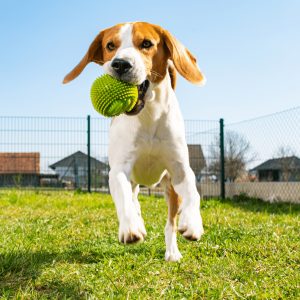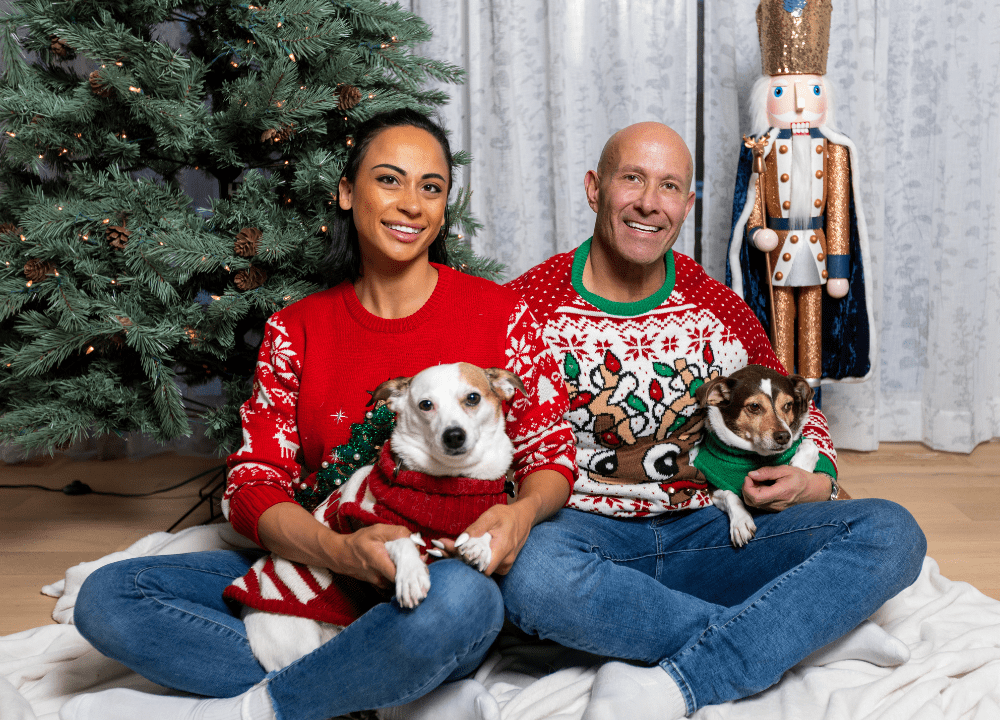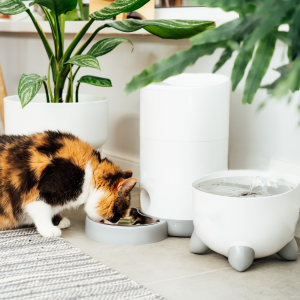
Creating a pet-friendly backyard is essential for pet owners who want a safe, enjoyable space for their furry friends. Whether you’re planning a new outdoor area or revamping an existing one, this guide will equip you with practical tips and expert advice on creating a pet-friendly backyard.
Creating a pet-friendly backyard involves securing the area with sturdy fencing, choosing non-toxic plants, providing shaded areas, designing dedicated play zones, ensuring proper drainage, and considering durable surfaces that are gentle on paws.
These initial tips are just the beginning. In the following sections, we’ll dive deeper into each aspect to help you create the ultimate backyard oasis for your pets. Keep reading to learn more about each step and how it contributes to a pet-friendly environment.
Start with Secure Fencing: Protect Your Pets from Outside Dangers
The first step in creating a pet-friendly backyard is ensuring it is fully enclosed and secure. Fencing is your primary defense against outside dangers, such as traffic, wildlife, and wandering pets.
When choosing the right fence, consider the size and breed of your pet. Large dogs may require taller fences, while smaller pets might need fencing with minimal gaps to prevent them from squeezing through. Wooden fences are popular for their durability and ability to block outside distractions, keeping your pets focused on their play. If you prefer something more aesthetically pleasing, vinyl or metal fencing can offer both security and style.
It’s also important to regularly inspect your fence for any potential escape routes. Loose boards, gaps, or holes can be inviting for curious pets. A well-secured fence not only protects your pets but also gives you peace of mind knowing they can safely enjoy their outdoor space.
Choosing the Right Plants: Avoiding Toxic and Harmful Greens
Creating a pet-friendly backyard doesn’t stop at fencing. The plants you choose can significantly impact your pets’ safety. Some common plants, while beautiful, are toxic to animals if ingested. For example, azaleas, lilies, and oleander are known to be harmful to pets and should be avoided.
Instead, opt for pet-safe plants that add beauty to your garden without the risk. Lavender, rosemary, and sunflowers are excellent choices, providing both color and texture to your backyard. Additionally, consider planting herbs like mint or basil, which can deter pests while being completely safe for pets.
Creating a designated pet-safe garden area allows your pets to explore freely without the worry of ingesting something harmful. Raised garden beds or containers can also help keep plants out of reach, especially if you have a dog that loves to dig.
Shade and Shelter: Creating Cool, Comfortable Spaces
In a pet-friendly backyard, providing shade and shelter is crucial, especially during the hot summer months. Pets, like humans, can suffer from heat exhaustion and sunburn if exposed to the sun for too long. Ensuring that your backyard has adequate shaded areas will help keep your pets cool and comfortable.
Natural shade from trees is an excellent option, but if your yard lacks mature trees, consider installing a pergola or building a custom shelter. These structures not only provide shade but also create a cozy nook where your pets can relax. You can also add a doghouse or a small canopy to offer protection from the elements.
A shaded area should also include access to fresh water. Consider placing a water bowl or even a small pet fountain in the shaded area to encourage hydration. This is especially important if your pets spend long periods outdoors.
Designing Play Zones: Keep Your Pets Active and Engaged
A pet-friendly backyard should be more than just a safe space—it should also be a fun and stimulating environment for your pets. Designing specific play zones can help keep your pets engaged and active, which is essential for their physical and mental well-being.
For dogs, consider setting up an agility course with tunnels, ramps, and jumps. These not only provide physical exercise but also challenge your pet’s mind. Digging zones are another great addition for dogs that love to dig. By designating a specific area for this activity, you can protect the rest of your yard from unwanted holes.
Cats, too, can benefit from a pet-friendly backyard. Consider adding climbing structures or shelves where your feline friends can perch and observe their surroundings. You can also create a safe outdoor catio, an enclosed area that allows cats to enjoy the outdoors without the risks of roaming free.
Ensure Proper Drainage: Keep the Yard Clean and Safe
Proper drainage is often overlooked but is vital when creating a pet-friendly backyard. Poor drainage can lead to standing water, muddy patches, and even unpleasant odors, all of which can make your backyard less enjoyable for both you and your pets.
Assess your yard for areas where water tends to accumulate and consider installing a drainage system or grading the landscape to direct water away from these spots. French drains, rain gardens, or dry wells are effective solutions for managing excess water. Not only does good drainage keep your yard clean, but it also helps prevent the growth of harmful bacteria and parasites that thrive in damp conditions.
A well-drained yard also reduces the risk of your pets getting muddy and tracking dirt into your home. By addressing drainage issues, you create a healthier, more pleasant environment for your pets to enjoy.
Pet Friendly Backyard Surfaces: Choose the Best Ground Coverings
The surfaces you choose for your pet-friendly backyard are just as important as the plants and play zones. Durable, paw-friendly surfaces are key to creating a space where your pets can play safely and comfortably.
Artificial turf is a popular choice for pet owners due to its durability and ease of maintenance. It provides a soft, grassy surface that is easy to clean and doesn’t get muddy. Pea gravel is another option, offering good drainage and a comfortable surface for pets to walk on. Rubber mats can be used in play areas to provide a cushioned surface that is gentle on joints, especially for older pets.
When selecting surfaces, consider your pet’s specific needs. For example, if your dog has sensitive paws, choose materials that stay cool in the sun and are soft underfoot. Regular maintenance, such as hosing down surfaces and checking for wear and tear, will help ensure your pet-friendly backyard remains a safe and enjoyable space.
Incorporate Safe Water Features: Fun and Refreshing Elements
Water features can add a fun and refreshing element to your pet-friendly backyard. However, it’s important to choose water features that are safe for pets to interact with.
Shallow ponds, splash pads, and pet fountains are all great options that can keep your pets cool and hydrated. When designing these features, consider the size and depth to ensure they are safe for your pets. Avoid deep ponds or features with sharp edges that could pose a risk.
Water features also provide an opportunity for interactive play. Many dogs enjoy splashing in water, and a well-placed splash pad can become a favorite spot in your backyard. Just be sure to supervise your pets around water and keep the area clean to prevent algae and bacteria growth.
Final Touches: Personalize Your Pet’s Backyard Paradise
Once the essential elements are in place, it’s time to add personal touches that reflect your pet’s personality and preferences. A pet-friendly backyard should feel like a paradise for your furry friends, offering both comfort and stimulation.
Consider adding features like pet-friendly pathways, tunnels, or hideaways where your pets can explore and play. These custom elements not only enhance the aesthetic of your backyard but also provide mental and physical enrichment for your pets.
Remember, the key to creating a pet-friendly backyard is to think about your pet’s needs and how they use the space. By tailoring the environment to their habits and preferences, you create a backyard that both you and your pets will love.
FAQ: How can I prevent my pet from digging up the lawn in my pet-friendly backyard?
To prevent your pet from digging up the lawn in your pet-friendly backyard, create a designated digging zone filled with soft soil or sand to satisfy their natural digging instinct. You can also discourage digging in unwanted areas by placing deterrents like chicken wire just beneath the surface or by using safe, pet-friendly repellents. Providing ample exercise and mental stimulation, such as interactive toys or regular playtime, can also reduce the urge to dig out of boredom or excess energy. Regularly reinforce positive behavior by rewarding your pet when they use the designated digging zone.
Creating a Pet-Friendly Backyard That Your Pets Will Love
Creating a pet-friendly backyard involves careful planning and consideration. By addressing each of these elements, you can create a safe, enjoyable, and personalized space for your pets. Whether you’re starting from scratch or enhancing an existing yard, these tips will guide you in making your backyard a true pet paradise.
At Dave Ozubko Real Estate Team, we understand that your pets are family, which is why we’re dedicated to helping you create the ideal pet-friendly backyard in your new home. Our #RealtortotheRescue initiative means that when you work with us, you’re not only finding the perfect property but also supporting local animal rescue efforts. A portion of every sale goes towards creating safe, happy environments for pets in need. Let us guide you in finding a home where your entire family—pets included—can enjoy a fulfilling and joyful life.


















































